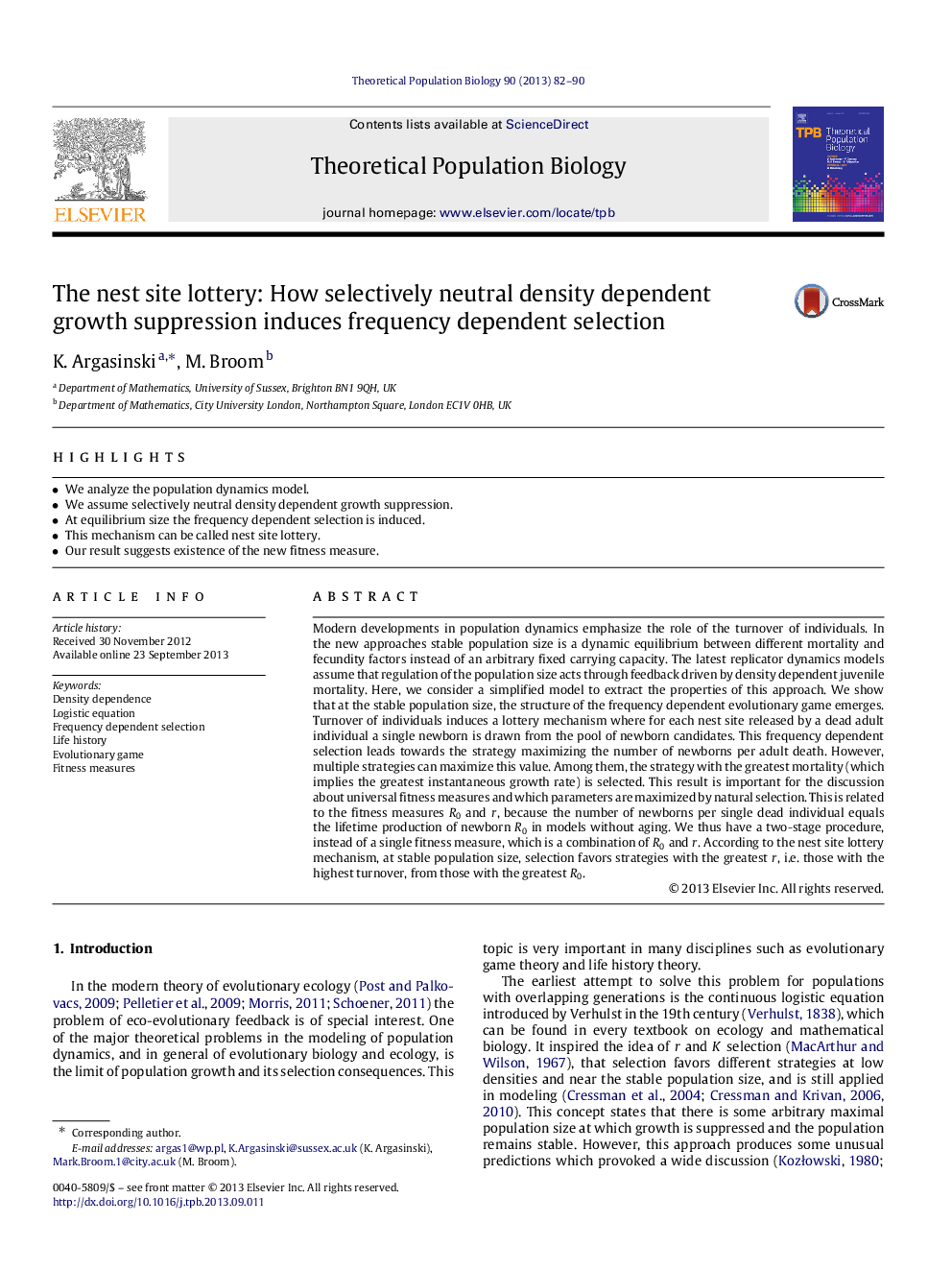| Article ID | Journal | Published Year | Pages | File Type |
|---|---|---|---|---|
| 6372399 | Theoretical Population Biology | 2013 | 9 Pages |
â¢We analyze the population dynamics model.â¢We assume selectively neutral density dependent growth suppression.â¢At equilibrium size the frequency dependent selection is induced.â¢This mechanism can be called nest site lottery.â¢Our result suggests existence of the new fitness measure.
Modern developments in population dynamics emphasize the role of the turnover of individuals. In the new approaches stable population size is a dynamic equilibrium between different mortality and fecundity factors instead of an arbitrary fixed carrying capacity. The latest replicator dynamics models assume that regulation of the population size acts through feedback driven by density dependent juvenile mortality. Here, we consider a simplified model to extract the properties of this approach. We show that at the stable population size, the structure of the frequency dependent evolutionary game emerges. Turnover of individuals induces a lottery mechanism where for each nest site released by a dead adult individual a single newborn is drawn from the pool of newborn candidates. This frequency dependent selection leads towards the strategy maximizing the number of newborns per adult death. However, multiple strategies can maximize this value. Among them, the strategy with the greatest mortality (which implies the greatest instantaneous growth rate) is selected. This result is important for the discussion about universal fitness measures and which parameters are maximized by natural selection. This is related to the fitness measures R0 and r, because the number of newborns per single dead individual equals the lifetime production of newborn R0 in models without aging. We thus have a two-stage procedure, instead of a single fitness measure, which is a combination of R0 and r. According to the nest site lottery mechanism, at stable population size, selection favors strategies with the greatest r, i.e. those with the highest turnover, from those with the greatest R0.
